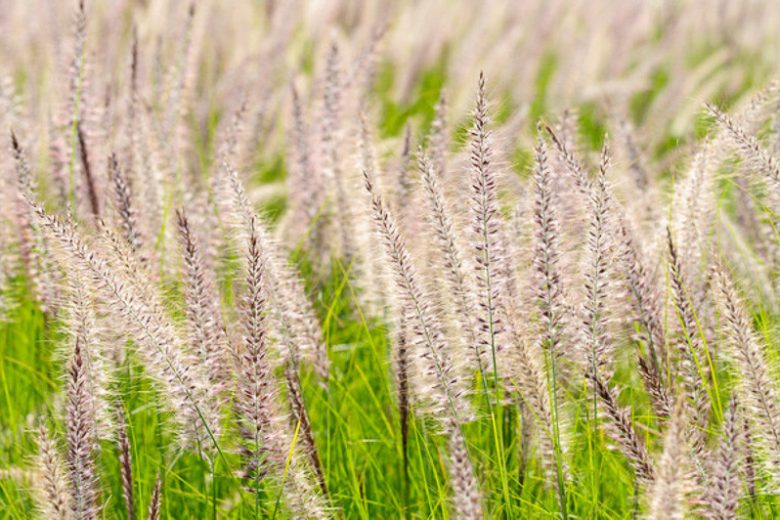Seedling competition between Pennisetum setaceum (Poaceae) and three native weeds of La Primavera wood, Guadalajara, Jalisco (México)
DOI:
https://doi.org/10.54502/msuceva.v3n2a6Palabras clave:
Colonization, interspecific competition, desertification, invasive alien species, loss of biodiversityResumen
Pennisetum setaceum (Forssk.) Chiov., 1923 is an exotic grass from the Arabian Peninsula that has been very successful as an ornamental plant worldwide in recent years. Unfortunately, it has proved to be a very competitive invader, causing ecological problems in several regions of the world. We don't know exactly how this species interacts with native weeds in Mexico. Our study aims to show the interactions of Pennisetum with three species of native weeds in the surroundings of the metropolitan area of Guadalajara, Jalisco, Mexico: Aeschynomene villosa var. longifolia (Micheli) Rudd, Desmodium aparines (Link) DC. and Paspalum notatum (Flüggé). The seeds of Pennisetum were tested in monospecific groups (competing against itself) and in association with each of the native species mentioned and with a treatment together with all the compound of the species mentioned, thus simulating what could happen in natural conditions upon the arrival of the seeds of P. setaceum in a degraded soil of Guadalajara. The results show how the biomass produced and the speed of growth of Pennisetum can be a real alarm for the conservation of local germplasm.
Descargas
Métricas
Citas
Comisión Nacional para el Conocimiento y Uso de la Biodiversidad-CONABIO. Especies exóticas invasoras 2021.
https://www.biodiversidad.gob.mx/especies/Invasoras/cuales-son
Secretaría de Medio Ambiente y Recursos Naturales-SEMARNAT. Anexo I: listado de plantas Lista de especies exóticas invasoras para México. Gobierno de México 2017. https://www.gob.mx/semarnat/documentos/listado-de-plantas
Global Invasive Species Database-GISD. Species profile: Cenchrus setaceus 2010. https://www.iucngisd.org/gisd/species.php?sc=309
Brunel S, Branquart E, Fried G, van Valkenburg J, Brundu G, Starfinger U, et al. The EPPO prioritization process for invasive alien plants. Bulletin 40 OEPP/EPPO. 2010. https://www.eppo.int/media/uploaded_images/ACTIVITIES/invasive_plants/Brunel_et_al-2010-EPPO_Bulletin.pdf DOI: https://doi.org/10.1111/j.1365-2338.2010.02423.x
Williams DG, Mack RN, Black RA. Ecophysiology of Introduced Pennisetum setaceum on Hawaii: The Role of Phenotypic Plasticity. Ecology 1995;76:1569–80. https://doi.org/10.2307/1938158 DOI: https://doi.org/10.2307/1938158
Pasta S, Badalamenti P, La Mantia T. Tempi e modi di un’invasione incontrastata: Pennisetum setaceum (Forssk.) Chiov. (Poaceae) in Sicilia. Naturalista Siciliano 2010;IV:487–525. https://www.sssn.it/PDF/PDF%20NS%2034/487-526.pdf
Da Re D, Tordoni E, De Pascalis F, Negrín-Pérez Z, Fernández-Palacios JM, Arévalo JR, et al. Invasive fountain grass (Pennisetum setaceum (Forssk.) Chiov.) increases its potential area of distribution in Tenerife island under future climatic scenarios. Plant Ecol 2020;221:867–82. https://doi.org/10.1007/s11258-020-01046-9 DOI: https://doi.org/10.1007/s11258-020-01046-9
Cabrera-García P, Marrero MD, Benítez AN, Paz R. Valorization of Pennisetum setaceum: From Invasive Plant to Fiber Reinforcement of Injected Composites. Plants 2023;12:1777. https://doi.org/10.3390/plants12091777 DOI: https://doi.org/10.3390/plants12091777
Tunison J. P. setaceum control in Hawaii Volcanoes National Park: management considerations and strategies . In: Stone C, Smith C, Tunison J, editors. Alien Plant invasions in native ecosystems of Hawai’i: management and research. 1st ed., Honolulu, Hawai: University of Hawai’i Press; 1992, p. 376–93.
Wagner W, Herbst D, Sohmer S. Manual of the flowering plants of Hawaii. 1st ed. Honolulu, Hawai: University of Hawaii Press; 1990.
Williams DG, Black RA. Drought response of a native and introduced Hawaiian grass. Oecologia 1994;97:512–9.
https://doi.org/10.1007/BF00325890 DOI: https://doi.org/10.1007/BF00325890
Cordell S, Sandquist DR. The impact of an invasive African bunchgrass (Pennisetum setaceum) on water availability and productivity of canopy trees within a tropical dry forest in Hawaii. Funct Ecol 2008; 22:1008–17. https://doi.org/10.1111/j.1365-2435.2008.01471.x. DOI: https://doi.org/10.1111/j.1365-2435.2008.01471.x
Richardson DM, Pyšek P, Rejmánek M, Barbour MG, Panetta FD, West CJ. Naturalization and invasion of alien plants: concepts and definitions. Divers Distrib 2000;6:93–107. https://doi.org/10.1046/j.1472-4642.2000.00083.x DOI: https://doi.org/10.1046/j.1472-4642.2000.00083.x
Badalamenti E, Militello M, La Mantia T, Gugliuzza G. Seedling growth of a native (Ampelodesmos mauritanicus) and an exotic (Pennisetum setaceum) grass. Acta Oecologica 2016;77:37–42. https://doi.org/10.1016/j.actao.2016.08.013. DOI: https://doi.org/10.1016/j.actao.2016.08.013
Hooper DU, Chapin FS, Ewel JJ, Hector A, Inchausti P, Lavorel S, et al. Effects of biodiversity on ecosystem functioning: a consensus of current knowledge. Ecol Monogr 2005; 75:3–35. https://doi.org/10.1890/04-0922 DOI: https://doi.org/10.1890/04-0922
Mayo-Mendoza M, Romo-Campos R de L, Medina-Fernández P. Tasa relativa de crecimiento de herbáceas con potencial de restauración en suelos degradados del bosque La Primavera, Jalisco, México. Acta Univ 2018;28:58–66. https://doi.org/10.15174/au.2018.1930 DOI: https://doi.org/10.15174/au.2018.1930
Rondón J, Vidal R. Establecimiento de la cubierta vegetal en áreas degradadas (principios y métodos). Revista Forestal Latinoamericana 2005;20:63–82. https://www.saber.ula.ve/bitstream/handle/123456789/24091/articulo4.pdf;jsessionid=C36AEBEC5F92CA8A078F57679C0CBAA8?sequence=2
Finch‐Savage WE, Leubner‐Metzger G. Seed dormancy and the control of germination. New Phytologist 2006;171:501–23.
https://doi.org/10.1111/j.1469-8137.2006.01787.x DOI: https://doi.org/10.1111/j.1469-8137.2006.01787.x
Flores J, Jurado E. Germinación de especies de cactáceas en categoría de riesgo del desierto chihuahuense. Rev Mex Cienc For 2011;2:59–70. https://www.scielo.org.mx/pdf/remcf/v2n8/v2n8a6.pdf DOI: https://doi.org/10.29298/rmcf.v2i8.539
Lot A, Chiang F. Manual de Herbario. Administración y manejo de colecciones, técnicas de recolección y preparación de ejemplares botánicos. 1st ed. México DF, México: Departamento de Botánica, Instituto de Biología, UNAM. Consejo Nacional de la Flora de México, A. C. México.; 1986.
Maldonado-Peralta MA, De Los Santos GG, García-Nava JR, Ramírez-Herrera C, Hernández-Livera A, Valdez-Carrazco JM, et al. Seed viability and vigour of two nanche species (Malpighia mexicana and Byrsonima crassifolia). Seed Science and Technology 2016;44:168–76. https://doi.org/10.15258/sst.2016.44.1.03 DOI: https://doi.org/10.15258/sst.2016.44.1.03
Salazar Mercado S, Maldonado Bayona H, Quintero Caleño J. Evaluación de la calidad fisiológica de las semillas de Linum usitatissimum L. con la prueba de tetrazolio. Avances En Investigación Agropecuaria 2018;22:25–35. https://revistasacademicas.ucol.mx/index.php/agropecuaria/issue/view/27/55
International Seed Testing Association-ISTA. International Rules for Seed Testing. Seed Health Methods 2024.
Romo Campos R, Contreras Rodríguez S, Huerta Martínez F, Muñoz Urías A. Efecto del vermiabono en crecimiento y acumulación de biomasa en Aeschynomene americana L. en bancos de minería a cielo abierto. Terra Latinoamericana 2009;27:115–21.
https://www.scielo.org.mx/pdf/tl/v27n2/v27n2a4.pdf
Friendly M, Fox J. Candisc: Visualizing generalized canonical discriminant and canonical correlation analysis. R (≥ 350) Version 08-6 2021. https://cran.r-project.org/web/packages/candisc/index.html
R Core Team. R: A language and environment for statistical computing. R Foundation for Statistical Computing. GNU Project 2021. https://www.r-project.org/about.html
Howeler R. Desordenes nutricionales. 1st ed. Santiago de Cali, Colombia: Centro Nacional de Agricultura Tropical - CIAT; 1983.
Norton B. Differences between species in forage quality. In: Hacker J, editor. Nutritional limits to animal production from pastures. 1st ed., United Kingdom : Commonwealth Agric. Bureaue, Farnham Royal, UK; 1981, p. 89–110.
Canham CD, Berkowitz AR, Kelly VR, Lovett GM, Ollinger SV, Schnurr J. Biomass allocation and multiple resource limitation in tree seedlings. Canadian Journal of Forest Research 1996;26:1521–30. https://doi.org/10.1139/x26-171 DOI: https://doi.org/10.1139/x26-171
Chapin FS. The Mineral Nutrition of Wild Plants. Annu Rev Ecol Syst 1980;11:233–60. https://doi.org/10.1146/annurev.es.11.110180.001313 DOI: https://doi.org/10.1146/annurev.es.11.110180.001313
Huante P, Rincon E, Acosta I. Nutrient Availability and growth Rate of 34 Woody Species from a Tropical Deciduous Forest in Mexico. Funct Ecol 1995;9:849. https://doi.org/10.2307/2389982 DOI: https://doi.org/10.2307/2389982

Descargas
Publicado
Cómo citar
Número
Sección
Licencia
Derechos de autor 2023 Bertolini et al.

Esta obra está bajo una licencia internacional Creative Commons Atribución-NoComercial-SinDerivadas 4.0.
Magna Scientia UCEVA proporciona un acceso abierto, libre y gratuito a su contenido, basado en el principio de que ofrecer al público un acceso libre a las investigaciones, ayuda a un mayor intercambio global del conocimiento. Lo cual, implica que los usuarios pueden leer, descargar, almacenar, imprimir, buscar, indexar y realizar enlaces a los textos completos de esta revista. Se permite distribuir los diversos artículos en las versiones post-print y oficial, sin previo permiso del autor o editor, considerando que el fin de este, no implica fines comerciales, ni la generación de obras derivadas; Solo se solicita la mención de la fuente así como la autoría. El titular del copyright será el o los autores que publiquen en Magna Scientia UCEVA.
Magna Scientia UCEVA está distribuida bajo los términos de la licencia https://creativecommons.org/licenses/by-nc-nd/4.0/deed.es




















